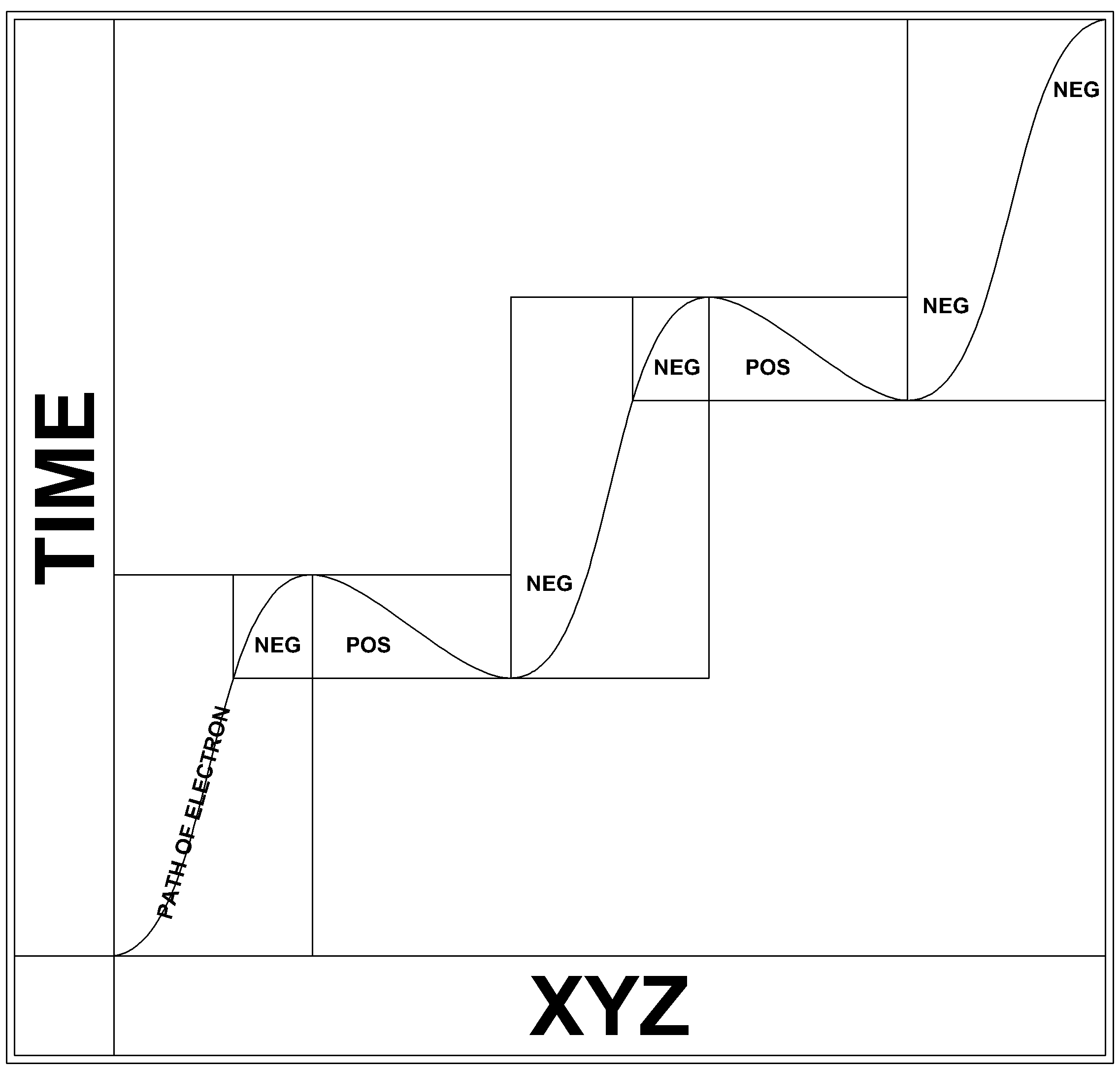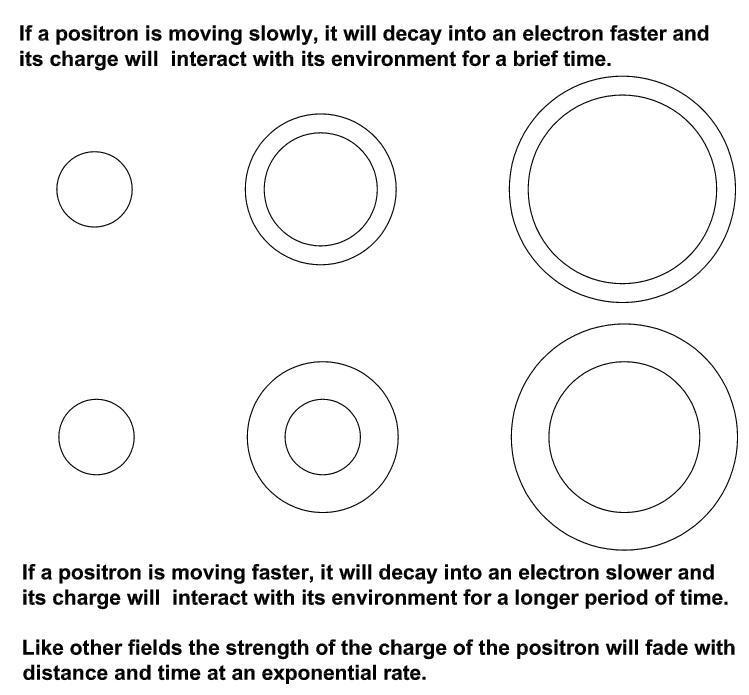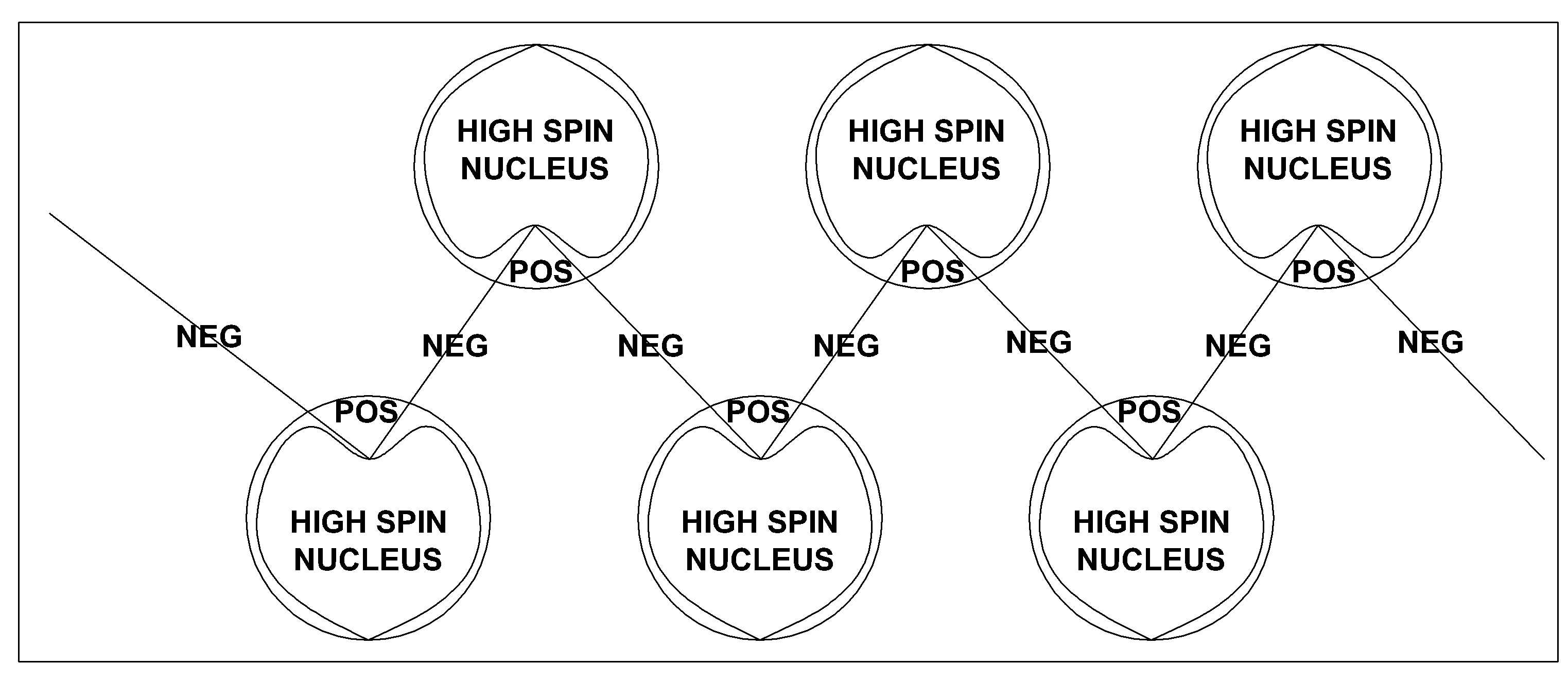2011 is the 100th anniversary of the discovery of superconductivity and I am thinking a blog of the puzzle would be a timely topic. When I was 17 I prayed to God for a challenge worthy of the skills I was given. I had seen a NOVA special on superconductivity and decided to research it at the local library. The impression I got than and even now is nobody has a clue of how it works and I should do it. This blog is a story of what I am thinking it is. I wanted to keep this brief, because I don’t like writing and I don’t know if its right.
After 21 years, my view on superconductivity has changed. My previous research on the topic was centered around the properties of the elements comprising superconductors. In early 2010, my daughter wanted to finish a series of books by Phillip Pullman with his book, Amber Spyglass. I decided to pick up a book I have wanted to read for many years called, Genius – the Life and Science of Richard Feynman by James Gleck. At the top of page 254 is a diagram from the late 1940’s of the path of an electron. To understand why this diagram is important you need three other pieces of information. The first is a quote from Scientific American February 1993 in an article titled “Resistance in High Temperature Superconductors”. “According to the so-called BCS theory, the conduction electrons travel without meeting resistance because they move in pairs, known as Cooper pairs. Electrons form Cooper pairs because they interact with phonons, mechanical vibrations in the crystalline lattice of the metal that resemble sound waves. The movement of the atoms in the lattice tends to neutralize the repulsion that electrons normally have for one another. In fact, it actually produces a small attractive force between electrons.” The second piece of information comes from a short definition of a positron being an electron going back in time. The third piece of information is positrons are positive, as opposed to electrons being negative, and leading to electrons and positrons being attracted to each other. Here is a revised diagram of the path of an electron. I think Feynman’s picture of the path of an electron is a picture of a Cooper pair. I think there is no resistance because all energy is transferred to itself and Cooper pairs are the past and present of an electron interacting with itself.
I think Feynman’s picture of the path of an electron is a picture of a Cooper pair. I think there is no resistance because all energy is transferred to itself and Cooper pairs are the past and present of an electron interacting with itself.
In the revised diagram, the positron is shown going a longer distance in a shorter period of time. I am trying to make the impression that an accelerated high speed positron will exist longer, travel longer, be nearer to the speed of light so it will be harder to speed up and require a larger discharge to slow down.
The question that should now drive the puzzle is how do you create a material the draws electrons into the past. An example that might lead somewhere is how do femtosecond terawatt lasers fired at gold produce a shower of positrons. Is the extremely dense concentration of positive photons pulling electrons into the past causing positrons to travel in the wake of the photons? How much energy does it take to sustain positrons?
I am going to take a detour for a bit and introduce two side ideas. The first concerns time travel and the second concerns entanglement. Concerning time travel, electrons can not go faster than the speed of light either going forward or backward in time. Speed is distance divided by time, but in this case time can go in a negative direction. Speed could be restated as the distance divided by the absolute value of the change in time. Next, imagine if an electron could continually go back and forth in time. If the electron were to travel oscillating between past and future, it could never travel forward in time. I think, if this can happen, it would look like entanglement with the two ends being the same electron. Distance would be almost meaningless. The change in time would be zero leading to infinite distance with infinite speed. 
The next concept to picture is the old thought experiment of what would happen to the Earth if the Sun just disappeared. The Earth would continue in its orbit for about 8.3 minutes before the lack of the Sun’s gravitation field caught up with Earth. In relation to positrons the charge effect of the positron on its surroundings would occur after the positron has already disappeared. In thinking about the laser issue, can positrons affect their surroundings prior to their existence like the laser pulse can draw electrons from the future into the past as positrons? 
The next thought experiment takes this problem out of the theoretical and into practical effects on elements. I have heard a blanket statement that electrons determine chemical properties. The thought experiment is this: What does a electron/positron/electron wave do to atoms in an ionic state? Start by counting the number of electrons. There are 2, not one. Cu+2 ion is 0.72 A. Cu+1 is 0.96 A. Cu is 1.28 A. This EPE wave would first expand the radius of the Cu+1 to 1.28 A. The positron would add a positive charge shrinking the radius to 0.72 A. The second electron would balloon the radius back to 1.28 A. My guess is this expansion and contraction is the mechanical vibration or phonons. There is most likely an effect on the other elements of lattice with this wave going through. Another effect besides size is magnetic. The magnetic susceptibility of Cu2O is -20 10-6 cgs. CuO is +238.9. Cu is -5.46.
Now for the more unsound of possible mechanisms being nuclear spin. It is unsound because it is not very consistent and I do not understand it correctly. I think I like the picture I have of it. I originally started looking at nuclear spin in the early days when anything that looked good, I keep. With elements like Vanadium and Niobium being low temperature superconductors and both isotopes of Copper having a nuclear spin, I made it a key property. My thought is having an unbalance nucleus gives it a tendency to wobble with an offset center of mass. I envisioned the nucleus looking like an egg and acting like a cam when it rotated. Here is the picture I drew.

When trying to find a reason why positrons form I came up with the idea off the top of my head that electrons become positrons when they go below their standard orbit and become positive and are repelled by the nucleus, when the positrons pop back above their standard orbit they become electrons again are attracted to the nucleus again. I envisioned the repulsion by the nucleus would eject electrons with enough energy to reach into the next nucleus and restart the process like the recoil from firing a bullet to reload the next bullet in a gun.
Now all I have are questions. How does the speed of light change in a superconductor like comparing in a vacuum to water or to glass? How are the electrical and magnetic fields altered in a superconductor when a EPE wave goes through? What will be the difference in the lifetime of a positron comparing having a larger distance to travel to get back to being an electron or to being accelerated faster by a stronger positive nucleus? That question relates to Molybdenum, whose oxides also have both a diamagnetic and paramagnetic oxides compared to Copper. Can you make a superconductor with Mo95 and Mo97? BaLuCuOx, BaLaCuOx, BaYCuOx can be superconductors. Why is BaScCuOx not a superconductor? Is something like 6Mo95 or 97 2Sr 1 Hf 1Sb121 1Sc Ox a superconductor?
Ending Comment: If this is fiction, maybe this can be referenced next to thyrathymalene (Asimov) concerning temporal chemistry.
Hopefully, there is some good fruit in here to work with.
Happy New Year,
Timothy Connet


